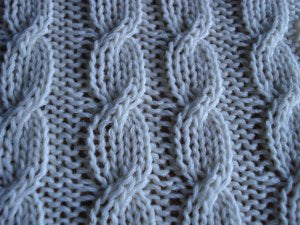Canon Jack McKenna, born on March 6th, 1920, was the youngest of seven in the bustling McKenna household on Dykegate Street in lively Dingle town. Not just a priest, but also a star footballer, he netted five county Championship medals with Dingle—clearly, he had divine intervention on and off the pitch!
In 1947, he traded his football boots for a collar, joining the priesthood and serving the Kerry diocese until his retirement as Canon of Castletownbere in 1994. Canon Jack was a man of many passions—photography, videography, history, culture, language, folklore, and music. Quite the Renaissance man, wouldn't you say?
During his time as a curate in Ballyferriter, he even moonlighted as Chaplain to the Great Blasket Island—a priestly duty with a side of island life.
His enthusiasm for capturing the quirks of life extended to the Blasket Islanders, meticulously recording their social happenings. Today, his treasure trove of research is proudly displayed at the Dunquin Heritage Center.
In 1985, he authored 'Dingle', cementing his status as both scholar and sportsman. We also owe a debt of gratitude to Barry Rogers for the republishing of 'Dingle' (3rd edition). Canon Jack may have had many roles, but to his family, he was simply the uncle, grand uncle, brother, and friend we all adored—and the most talented footballing priest around!
Thank you for choosing us! Your support means the world to us. Together, we're making a difference for the environment and celebrating our culture. We couldn't do it without you. Thank you!
Sustainability at Dingle Woollen Company
At Dingle Woollen Company, we are dedicated to crafting high-quality products with a deep respect for the environment. Sustainability is at the core of everything we do, ensuring that our impact on the planet is as gentle as possible. Here’s how we’re making a difference:
🌿 Eco-Friendly Materials
We prioritize natural, biodegradable fibers such as 100% lambswool and merino wool, responsibly sourced to support animal welfare and reduce synthetic waste. By incorporating recycled and organic materials, we help conserve resources and promote a more sustainable product lifecycle.
🤝 Ethical & Responsible Production
We carefully select our manufacturing partners to uphold fair labor practices and eco-conscious production methods. Every supplier we work with shares our commitment to safe working conditions, fair wages, and sustainable craftsmanship.
📦 Sustainable Packaging
Reducing plastic waste is a priority. That’s why we use recycled, recyclable, and compostable packaging materials wherever possible. Our packaging is designed to protect your purchases while being kind to the planet.
♻️ Minimizing Waste
We take a thoughtful approach to production, using digital design techniques and small-batch manufacturing to reduce overproduction and limit waste. This helps us maintain a lower environmental footprint while delivering only what’s needed.
🌍 Giving Back to the Community
We believe in supporting local initiatives and environmental conservation efforts. A portion of our sales goes toward eco-conscious programs that help preserve the natural beauty of our surroundings and strengthen our community.
✨ Quality That Lasts
Sustainability is about longevity. Our products are designed to stand the test of time, encouraging a shift away from fast fashion. Investing in durable, timeless pieces means less waste and more value for years to come.
💚 Join Us on Our Sustainable Journey
Every purchase you make supports a more ethical, responsible, and eco-friendly future. Thank you for choosing Dingle Woollen Company, where tradition meets sustainability.
Aran stitches are traditional patterns used in Aran knitting, originating from the Aran Islands off the west coast of Ireland. These stitches are renowned for their intricate designs and symbolic meanings. Some common Aran stitches include:
-
 Cable Stitch: This stitch resembles twisted ropes or cables and symbolizes the ropes used by fishermen. It represents a wish for a fruitful catch and safety at sea.
Cable Stitch: This stitch resembles twisted ropes or cables and symbolizes the ropes used by fishermen. It represents a wish for a fruitful catch and safety at sea. -
 Diamond Stitch: The diamond stitch symbolizes the small, fertile fields of the Aran Islands and is often associated with prosperity and success in farming.
Diamond Stitch: The diamond stitch symbolizes the small, fertile fields of the Aran Islands and is often associated with prosperity and success in farming. -
 Honeycomb Stitch: This stitch resembles the honeycomb of bees and represents hard work, diligence, and the rewards of labor.
Honeycomb Stitch: This stitch resembles the honeycomb of bees and represents hard work, diligence, and the rewards of labor. -
 Basket Stitch: The basketweave stitch mimics the woven patterns of baskets and symbolizes the fisherman's basket, representing a wish for a bountiful catch.
Basket Stitch: The basketweave stitch mimics the woven patterns of baskets and symbolizes the fisherman's basket, representing a wish for a bountiful catch. -
 Trinity Stitch: Also known as the Blackberry or the Bramble stitch. Holy Trinity: The name "Trinity stitch" itself suggests a connection to the Christian concept of the Holy Trinity—Father, Son, and Holy Spirit. In this interpretation, the three-dimensional texture created by the stitch may symbolize the unity and interconnectedness of these divine entities. Celtic Knots: The intricate design of the Trinity stitch resembles traditional Celtic knotwork, which is rich in symbolism and often represents themes such as eternity, continuity, and interconnectedness. In this context, the Trinity stitch may symbolize the eternal cycles of life, death, and rebirth, as well as the interconnectedness of all living beings. Natural Elements: Some interpretations suggest that the Trinity stitch symbolizes elements of the natural world, such as berries or seeds. In Celtic folklore, berries are often associated with fertility, abundance, and the cycle of life, making them potent symbols of growth and renewal.
Trinity Stitch: Also known as the Blackberry or the Bramble stitch. Holy Trinity: The name "Trinity stitch" itself suggests a connection to the Christian concept of the Holy Trinity—Father, Son, and Holy Spirit. In this interpretation, the three-dimensional texture created by the stitch may symbolize the unity and interconnectedness of these divine entities. Celtic Knots: The intricate design of the Trinity stitch resembles traditional Celtic knotwork, which is rich in symbolism and often represents themes such as eternity, continuity, and interconnectedness. In this context, the Trinity stitch may symbolize the eternal cycles of life, death, and rebirth, as well as the interconnectedness of all living beings. Natural Elements: Some interpretations suggest that the Trinity stitch symbolizes elements of the natural world, such as berries or seeds. In Celtic folklore, berries are often associated with fertility, abundance, and the cycle of life, making them potent symbols of growth and renewal.
-
 Irish Moss Stitch: The moss stitch can symbolize growth, resilience, and the ability to thrive in challenging environments, reflecting the resilience and resourcefulness of the islanders who historically wore Aran sweaters.
Irish Moss Stitch: The moss stitch can symbolize growth, resilience, and the ability to thrive in challenging environments, reflecting the resilience and resourcefulness of the islanders who historically wore Aran sweaters.
-
 Zig Zag Stitch: The diamond pattern can symbolize a fisherman's net or the mesh of a lobster pot, signifying a wish for a fruitful catch and abundance at sea. Overall, the zigzag or diamond stitch in Aran sweaters reflects the deep connection to nature, livelihoods, and cultural heritage of the communities on the Aran Islands, embodying themes of prosperity, interconnectedness, and the cycles of life.
Zig Zag Stitch: The diamond pattern can symbolize a fisherman's net or the mesh of a lobster pot, signifying a wish for a fruitful catch and abundance at sea. Overall, the zigzag or diamond stitch in Aran sweaters reflects the deep connection to nature, livelihoods, and cultural heritage of the communities on the Aran Islands, embodying themes of prosperity, interconnectedness, and the cycles of life.

METRIC INCHES
|
SIZE |
SML |
MED |
LRG |
XLG |
|
UK Size: |
8-10 |
12-14 |
16-18 |
20-22 |
|
US Size: |
4-6 |
8-10 |
12-14 |
16-18 |
|
A:Length |
60cm |
62cm |
64cm |
66cm |
|
B:Chest |
52cm |
54cm |
56cm |
58cm |
|
C:Neck to Cuff |
72cm |
74cm |
76cm |
78cm |




